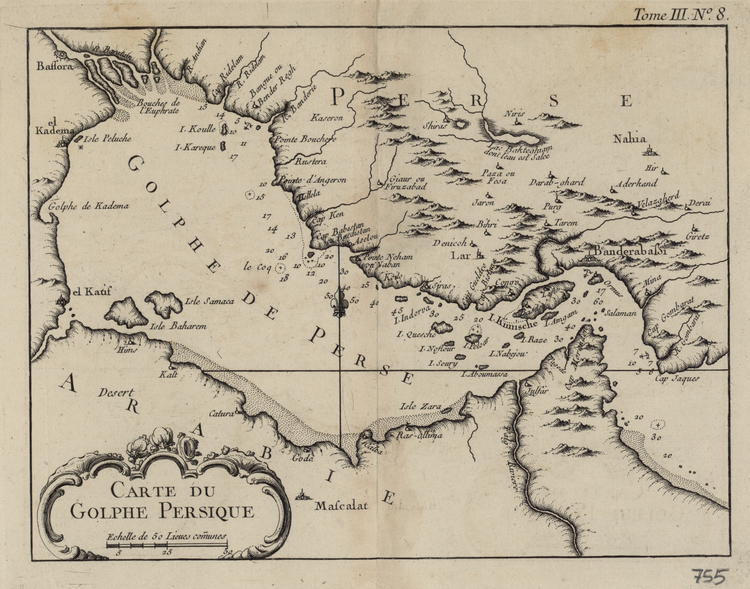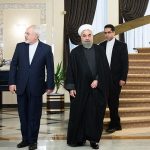by Kourosh Ziabari
If you’ve ever wondered how historical realities can be sacrificed and manipulated in the service of myopic political goals, there is a great example for you to follow in your daily roundup of international news offered by the mainstream media.
While reading through coverage of current Middle Eastern affairs in international newspapers, magazines, and news websites, it’s very common for readers to come across the words “the Gulf.” Many people recognize what “the Gulf” signifies, but many others don’t know and get perplexed and still others ignore the vague reference while reading. Basically, the phrase is meant to denote the body of water separating Iran from the Arabian Peninsula. By accident, the sea has got a name of its own and is called the “Persian Gulf.” But there are many reasons why it is becoming customary for the mass media to identify it simply as “the Gulf,” leaving critical audiences astounded why the expanse of water is not called by its full name, unlike multiple other geographic entities that are allowed the use of their full names.
A Vital Waterway
The Persian Gulf is a vital waterway that is an extension of the Indian Ocean through the Strait of Hormuz, which is considered by the U.S. Energy Information Administration “the world’s most important strategic chokepoint for oil transport.” The earliest evidence of human life on islands in the Persian Gulf dates back to the Middle Paleolithic Period, spanning from 300,000 to 30,000 years ago. Inhabitants around the Persian Gulf in ancient times are believed to be the first people to use fish as food.
University of Birmingham researchers believe the land that now lies beneath the Persian Gulf might have been host to humans over 100,000 years, before it was swamped by the Indian Ocean around 8,000 years ago.
Oil was found in the Persian Gulf in 1908. However, it was not until the 1903s when major discoveries were made. It’s reported that more than 50% of the world’s oil reserves lie in and around the Persian Gulf. Moreover, about a third of the world’s liquefied natural gas passes through the Strait of Hormuz, the narrow water lane connecting the Persian Gulf and the Sea of Oman.
Sir Arnold Talbot Wilson, the British civil commissioner in Baghdad from 1918-20, wrote in a book published in 1928, “No water channel has been so significant as Persian Gulf to the geologists, archaeologists, geographers, merchants, politicians, excursionists, and scholars whether in past or in present. This water channel which separates the Iran Plateau from the Arabia Plate, has enjoyed an Iranian Identity since at least 2,200 years ago.”
The Persian Gulf has been a hotbed of economic development in recent years. The 2005-2015 expansion of the economies of Persian Gulf states—mostly Saudi Arabia, the UAE, Kuwait, Oman, Qatar, and Bahrain—persuaded millions of migrants to move to the region in search of economic opportunities. According to a Pew Research Center study, the number of non-displaced, international migrants living in the Middle East rose from 19 to 31 million in that ten-year period.
Due to its enormous gas and oil resources and its strategically important position, the Persian Gulf has been an arena of rivalry between the world’s major powers since the mid-19th century, when British India, Tsarist Russia, and the Ottoman Empire faced off there.
What’s in a Name?
For a number of reasons, the Persian Gulf epitomizes Iranian national identity and is highly significant to the Iranian people. The most important reason is Iran’s historical sovereignty over the body of water and that the majority of countries that surround the Gulf today were once parts of the Persian Empire, when the Achaemenid Dynasty was in power. Therefore, it’s not difficult to decipher the strong passion Iranians feel about the Persian Gulf. Today, Among the Persian Gulf’s eight littoral states, Iran has the longest coastline and the largest population. The largest island in the Persian Gulf is Iran’s Qeshm Island.
Countless historical documents identify the body of water as the Persian Gulf, and there is unanimity over the historicity and validity of the name. Greek geographers Strabo, who lived in the Augustan era, and Ptolemy, who lived in the 2nd century AD, used the name “Persian Gulf” in their maps.
Today, the United Nations only recognizes the name Persian Gulf and issued two editorial directives in 1994 and 1999, clarifying its position on the naming of the waterway.
The declining influence of Iran following the 1979 revolution, and the growth of pan-Arab sentiments and Arab nationalism since the early 1960s precipitated the coinage of the term “Arabian Gulf” as a replacement for a name that has been in use commonly for hundreds of years. The Eighth United Nations Conference on the Standardization of Geographical Names in 2002 concluded that the name Arabian Gulf is “faulty.”
These days, certain governments and media organizations see the distortion of the name “Persian Gulf” as a safe and inexpensive shortcut to chip away at Iran while the Islamic Republic is in conflict with the West over the nuclear crisis and a number of other sticking points. For some media outlets, identifying the Persian Gulf as “the Gulf” or “Arabian Gulf” is a matter of pandering to their well-off benefactors in the Arab world, and for some of them, it’s all about demoralizing Iran by deliberately shrugging off a historical reality.
Indisputably, when a country is diplomatically and politically fragile, its assets and resources will be accordingly at stake, and its rivals will race to take its belongings away. The tendency of international media and certain world governments and politicians to call the Persian Gulf “the Gulf” or even go the extra mile to call it the “Arabian Gulf” is one of the offshoots of Iran’s growing isolation in recent years over its much-debated nuclear program and its controversial regional policies.
However, it’s safe to argue that those in the media who tamper with a geographical name rooted in history don’t simply kowtow to a political agenda. They betray the conscience of their audience and promote fake information. Altering the name of the Persian Gulf does not simply translate to debilitating Iran. It’s equivalent to undermining a shared heritage of mankind and trampling its identity underfoot.
There are numerous geographical regions whose names are taken from the nearby countries—for example, the Indian Ocean, the Gulf of Mexico and the South China Sea. The world would be a terrible place if the political nemeses of these countries attempted every day to concoct a new name for those entities in order to fulfill short-term political goals.
Kourosh Ziabari is currently taking a Master’s degree in International Multimedia Journalism at the University of Kent’s Centre for Journalism and is a 2016-17 Chevening Scholar from Iran. Ziabari is a reporter at Fair Observer.






When neutral reporters were very active in the latest incidents in the area, they kept using the word Gulf on its own. Some of those tankers were either in Persian Gulf, or in the Gulf of Oman, or in the Gulf of Aden. So I literally took on the Sky reporter and asked him, which one, and he was dumb-founded to learn the Persian Gulf is not the only Gulf in the area. Obviously they all just want to belittle Iranians for the Arabs. Little did they know that some of us actually know a little bit of geography, and these days with tankers going all three Gulf’s, it is important for insurance purposes to get the reporting right. But Reuters, or even The Times today both found it painful to type the long versions. I guess they are afraid of Arabs.
For centuries Arabs themselves referred to this body of water as the Persian Gulf (khalij al-faris). I believe it was Nasser who first encouraged Arabs to call it the Arabian Gulf under the banner of Arab nationalism.
It is used mostly in UK media and government due to their eternal mission of changing the facts that might benefit them someday!
One must also add that the Greater Iran always extended to the southern shores of Persian Gulf. Large number of Iranians and Farsi speaking citizens of littoral states in the southern edge of this body of water and Bahrain which was iran’s until quite recently speaks to this despite the fact that British did their best in the decades before giving “independence” to these vassal rentier states to Arabize them
Strabo and Ptolemy called it Sinus Persicus